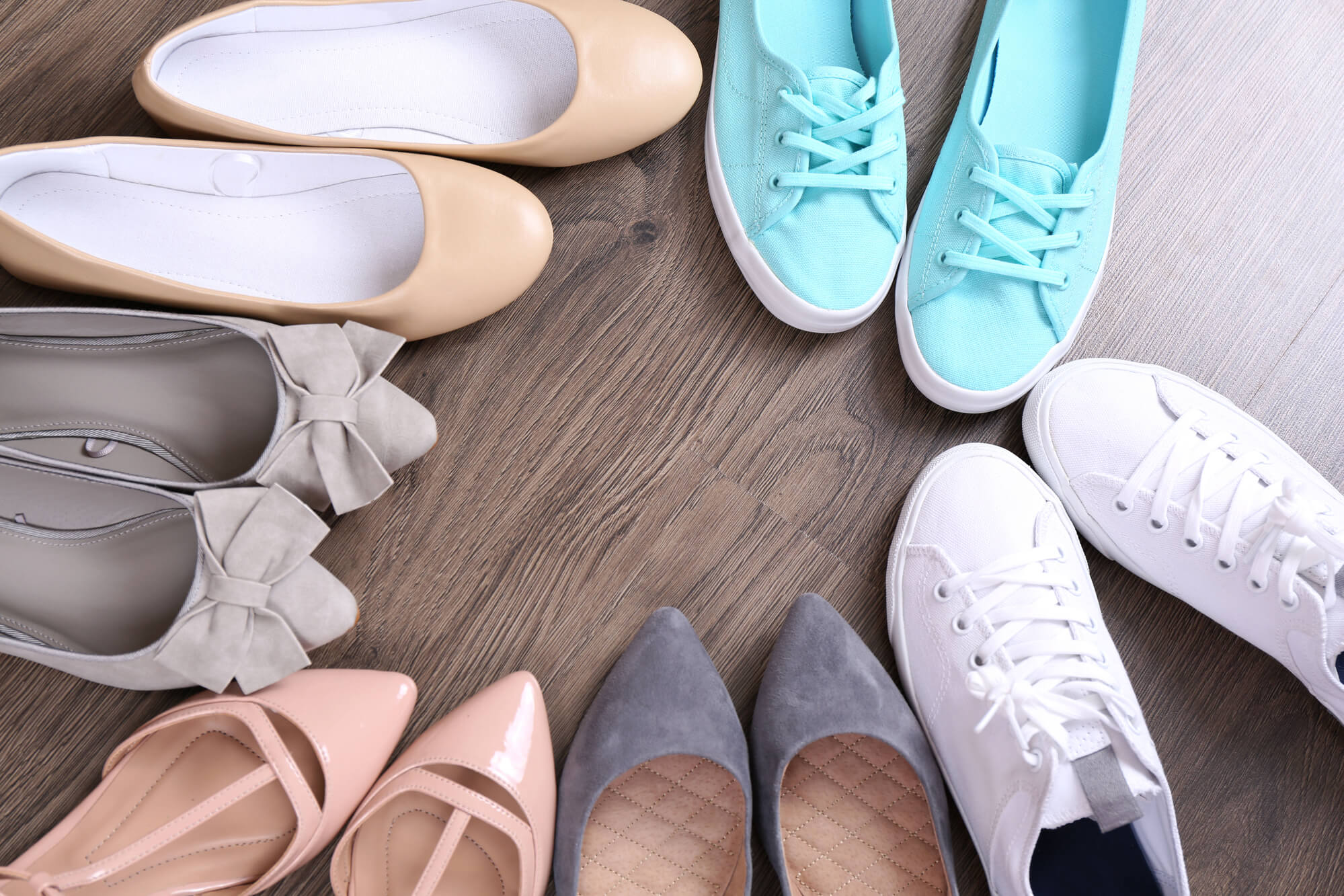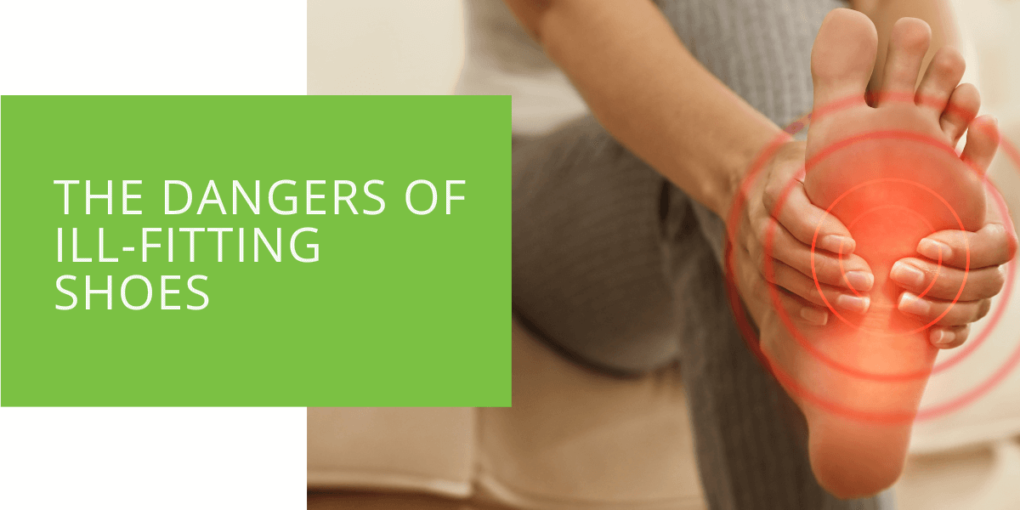The Dangers of Ill-Fitting Shoes
Your feet are essential to your mobility and overall well-being. They support your body weight, enable movement, and serve as a foundation for your body. Therefore, taking proper care of your feet is crucial, and one of the most important ways to do so is by wearing properly fitting shoes. Wearing the wrong size or type of shoes can lead to various foot problems that can cause discomfort and pain. This article will discuss the dangers of ill-fitting shoes and how they can impact your foot and ankle health.
Risks of Wearing Ill-Fitting Shoes
Wearing shoes that do not fit properly can lead to several foot problems. Here are some of the most common risks associated with wearing poorly-fitting shoes:
Foot Pain and Discomfort
One of the most common problems from wearing ill-fitting shoes is foot pain and discomfort. Shoes that do not fit properly can cause pressure and stress on certain areas of your feet, leading to pain and discomfort. If you experience pain in your feet while wearing shoes, it could indicate that they do not fit properly.
Development of Corns and Calluses
Corns and calluses are thickened, hardened areas of skin that can develop on your feet due to friction or pressure. Wearing shoes that do not fit properly can cause these problems. Shoes that are too tight or loose can cause rubbing or pressure, leading to corns and calluses. These problems can be painful and unsightly, making wearing certain types of shoes difficult.
Ingrown Toenails
Ingrown toenails occur when the corners or sides of your toenails grow into the surrounding skin. This problem can be painful and lead to swelling and redness. Wearing too tight shoes can increase the risk of ingrown toenails as they can push the nail into the skin, leading to this condition.

Bunions
Bunions are bony bumps that form on the joint at the base of the big toe. Wearing poorly-fitting shoes that are too tight can increase the risk of developing bunions. This problem can cause pain and make it difficult to wear shoes.
Hammertoes
Hammertoes are a foot deformity that occurs when one or more toes are bent abnormally. Wearing shoes that do not fit properly can cause hammertoes. Too tight shoes can cause the toes to curl and bend unnaturally, leading to this problem.
Plantar Fasciitis
Plantar fasciitis causes pain in the heel and bottom of the foot. It occurs when the plantar fascia, a thick band of tissue running along the foot's bottom, becomes inflamed. Wearing ill-fitting shoes that do not provide proper arch support can lead to this condition.
Metatarsalgia
Metatarsalgia causes pain and inflammation in the ball of the foot. Wearing poorly-fitting shoes that do not provide proper cushioning or support can lead to this condition.
Neuroma
Neuroma occurs when the tissue around the nerves leading to the toes thickens, causing pain and numbness. Wearing shoes that do not fit properly can increase the risk of developing neuroma.

How to Identify Ill-Fitting Shoes
Knowing how to identify ill-fitting shoes is essential for maintaining good foot health. Here are some signs to look for to determine if your shoes are not fitting properly:
- Your shoes are too tight or loose: If they feel too tight or too loose, they are not fitting properly. Your feet should be able to move freely inside your shoes without feeling constricted or slipping.
- Your toes are cramped: If they feel cramped or squished in your shoes, they are not fitting properly. Your toes should have enough room to wiggle and move comfortably.
- Your heels slip: If your shoes slip out of your shoes when you walk, it's a sign that they are too loose. Your heels should fit snugly inside your shoes without slipping.
- You develop blisters or calluses: If you develop blisters or calluses on your feet after wearing shoes, it's a sign that your shoes are rubbing against your skin. This can be an indication that your shoes are not fitting properly.
- You feel pain or discomfort: If you experience pain or discomfort in your feet while wearing shoes, it's a sign that they do not fit properly. Your shoes should be comfortable and not cause any pain or discomfort.

How to Avoid Ill-Fitting Shoes
Here are some tips for avoiding poorly-fitting shoes:
- Get your feet measured regularly: Your shoe size can change over time, so it's important to get your feet measured regularly to ensure that you wear the right size.
- Buy shoes at the end of the day: Your feet can swell throughout the day, so it's best to buy shoes in the late afternoon or evening when your feet are at their largest.
- Try on shoes before purchasing: Always try them to ensure they fit properly. Walk around in them and make sure they feel comfortable and do not cause any pain or discomfort.
- Replace old shoes: Shoes can wear out over time, so replacing them is important when they show signs of wear and tear.
- Get professional help from a podiatrist: If you have foot problems or concerns about your shoe fit, a podiatrist can help you find the right shoes for your foot type and provide guidance on foot care.
Conclusion
Wearing ill-fitting shoes can cause various foot problems impacting your overall health and well-being. By choosing the right shoes for your foot type, identifying signs of ill-fitting shoes, and taking care of your feet, you can avoid these foot issues and maintain good foot health. If you have concerns about your shoe fit or foot health, consult a podiatrist for guidance and advice. You can keep your feet healthy and pain-free for years with proper foot care and the right footwear.

